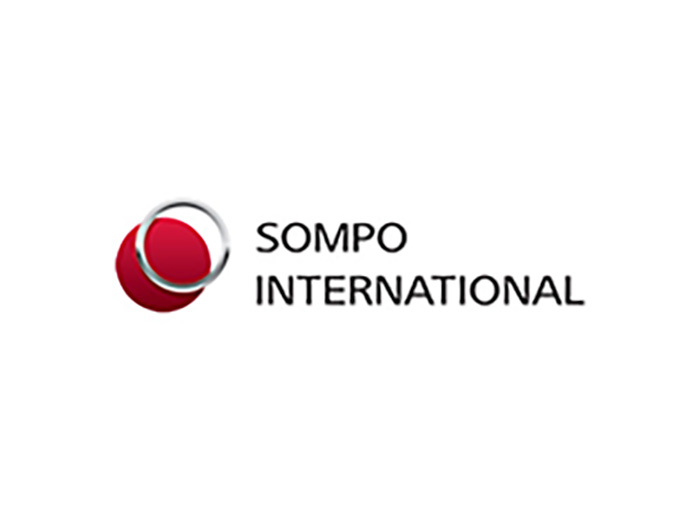Sponsored Content by QBE
Here’s What a Client-Centric Carrier Really Looks Like, and What It Means for Insureds

A high-energy, collaborative culture and a streamlined structure are the key ingredients to a truly customer-focused approach.
Lots of insurers claim to put their clients at the center of everything they do. But as an insured, how can you tell who really means it, and how does a “customer-centric” approach impact the experience for the policyholder?
Uwe Schoberth, Global Head of Market Management for QBE Insurance Group, says the end goal of a customer-centric approach should be to make life easier for the client.
Risk managers want to work with carriers who understand their business, so they don’t have to spend time explaining risks before discussing solutions. They want a comprehensive insurance program that leaves no coverage gaps. They want niche expertise to help them find ways to improve their risk profiles. And they want an efficient claims process so they can recover and move on from a loss quickly. And they want these pieces to come together without having to chase down multiple contacts within one organization.
What prevents many insurers from delivering a truly customer-centric approach is that expertise becomes siloed by line of business, preventing the internal collaboration that is necessary to deliver streamlined solutions.
“Traditionally, underwriters manage their own portfolios, which means that they don’t always talk to each other about what the client truly needs. Internal collaboration and communication are an integral part of putting the client first. You have to bring all of your expertise to bear,” said Matthew Keeping, Eastern Regional Executive, QBE North America. “Having underwriters sit down and agree that the same client is at the center of the decisions they make — that’s where the hard work comes in.”
At QBE, a client-centric approach is established through a culture of collaboration, an integrated operational structure, and high level of niche expertise.
Benefits of a High-Energy, Collaborative Culture

Dennis Kearns, Head of Distribution and Major Trading Partner Engagement, QBE North America
Collaboration among underwriting, claims, sales and distribution professionals, across multiple lines of business is ingrained into the culture at QBE. But “collaboration” may not be the right word. It’s more about camaraderie.
“If you ask for help, people will step up 100 percent of the time,” Schoberth said. “We have the type of environment that allows us to work together internally toward a common goal, which is to solve problems for our clients first and foremost.”
Another good descriptor of the culture is “passionate.” Senior leadership at QBE have worked to foster a team mentality, and sense of excitement about their mission and future as an integrated specialist insurer. That motivates people to perform their best, but it also comes across to clients.
“Clients like to go where they see the energy. When we’re working to solve a problem, we bring a high level of curiosity and commitment, and a lot of positive energy. We don’t leave that at the door when we speak with our clients and brokers. People can feel that that we are dedicated to them and aligned around their needs,” Keeping said.
Multidisciplinary internal teams work with each client to not only understand their exposures but also find ways to mitigate them, acting as extensions of the risk management team.
This can’t happen when experts are focused only on exposures specific to property, general liability, auto, D&O, workers’ comp, etc. Breaking down those barriers lets underwriters look at a client holistically and share their insights where risks overlap. This results in a tightly woven solution that addresses all of a client’s needs without redundancies or gaps.
“Simply put, when we work together and bring all of our expertise to bear, that value proposition of being customer-centric comes to life,” Schoberth said.
Leveraging Specialized Expertise
An integrated operational structure bolsters the culture of collaboration while keeping execution efficient and simple across multiple global divisions.
“We recently streamlined our operations, rolling the Pacific division into the Australia division, and the Asia division into the European division. We went from five global divisions to three, which makes the organization easier to navigate for clients and brokers as well as our underwriters and claims professionals,” Schoberth said.
Despite being global in nature, QBE’s regional offices work with a high degree of autonomy. Regional teams are given the flexibility to serve clients how they see fit depending on their unique market and regulatory environments. “That is unique for a global insurer,” Keeping said, “that the regional teams tailor their offerings to the local market. It’s a subtle difference, but an important one.”
To further the goal of building a global base of support with regional execution, QBE formed its Global Market Management Team at the beginning of 2019.
“The team combines what used to be separate approaches to managing our network of preferred distributors and engaging with our customers,” Dennis Kearns, Head of Distribution and Major Trading Partner Engagement, QBE North America said.
“The team will work both globally and at a divisional level to devise best practices that meet the unique needs of its clients and brokers in a particular region. It’s about driving a consistent experience for our customers around the globe.”
“The team combines what used to be separate approaches to managing our network of preferred distributors and engaging with our customers.”
— Dennis Kearns, Head of Distribution and Major Trading Partner Engagement, QBE North America
An Integrated Approach
In North America, the company’s global approach to client service comes to life in its value as an integrated specialist insurer.
Two industry verticals launched for healthcare and financial institutions in North America exemplify that key differentiator.
“These verticals can offer a full product suite to the clients in those industries under a single point of leadership, with underwriting authority across multiple lines in order to make the appropriate and decision for clients,” said Keeping.
For example, the dedicated team of professionals in the healthcare vertical was able to round out coverage for a privately-owned organization providing nephrology and staffing placement services for dialysis centers and clinics — an organization with highly complex needs. At the time they submitted an application for medical malpractice coverage, they held additional policies with four other carriers.
“Our experts identified the need for additional coverage, provided counsel and turned around the opportunity quickly, adding inland marine, property and fleet coverage to their program and eliminating the need to manage multiple insurers,” Keeping said.
“This greatly streamlined their program and gave them a single point of contact instead of five.
A Model of Sustainable Growth
At the end of the day, is this model of an integrated specialist insurer delivering on the promise of client centricity by making things easier for the customer? QBE’s financial statements suggest that insureds see the value.
“Our improved financial results serve as a proof point, indicating that our Integrated Specialist Insurer strategy is working. The market is responding to our ability to deliver unique value through applied expertise, an experience of excellence and global strength. Profitable growth with our largest trading partners was up compared to 2017,” Kearns said.
He and Keeping expect the organization’s flatter and more nimble structure to yield more sustainable growth going forward. “By underpinning the expertise that we have here in the company with the support of global strength, we can continue to provide an experience of excellence consistently,” Kearns said.
“The key is to show up as a team — distribution, underwriting, claims, risk engineering. When we show up together, we win together,” Keeping said.
To learn more, visit https://www.qbe.com/.
This article was produced by the R&I Brand Studio, a unit of the advertising department of Risk & Insurance, in collaboration with QBE North America. The editorial staff of Risk & Insurance had no role in its preparation.
>










